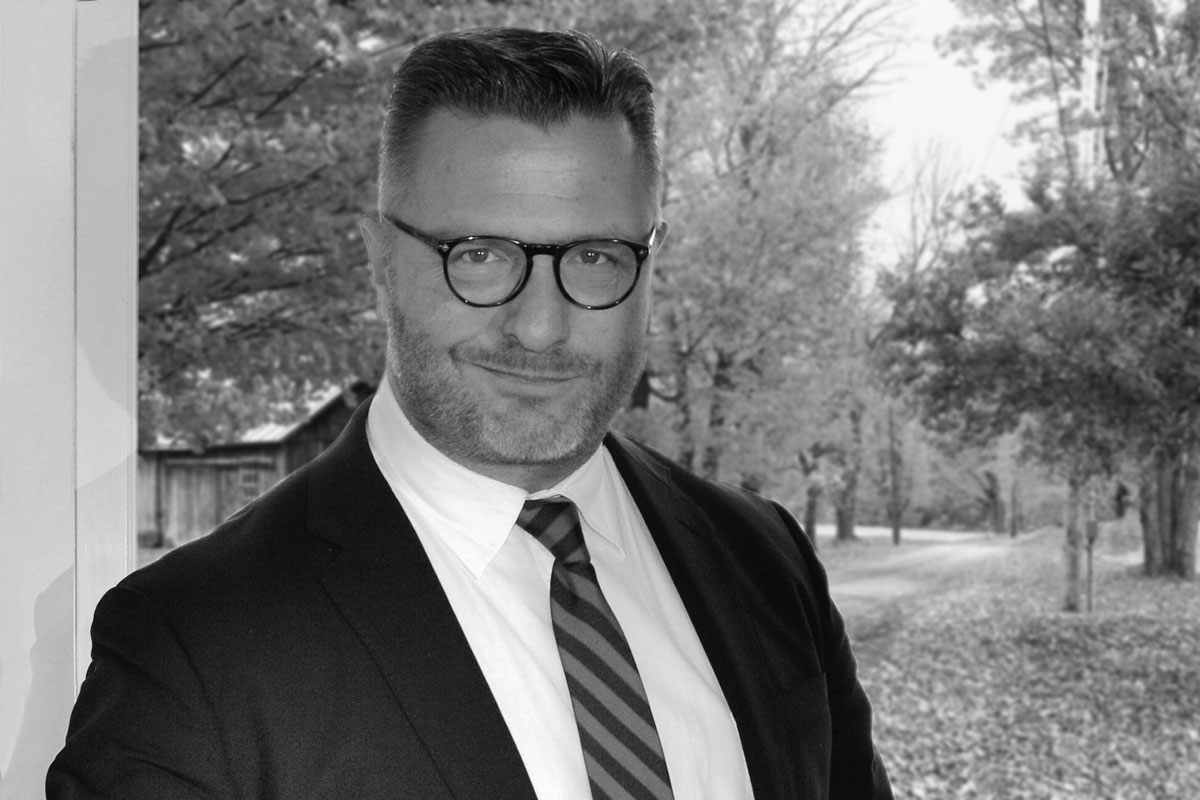Professor Justin Nolan was born and raised in El Dorado, Arkansas, a small city near the Louisiana border that he describes as ethnically and culturally diverse. El Dorado shares cultural features of both South Arkansas and North Louisiana. He attributes his experience growing up in El Dorado as his inspiration for his early interests in human and cultural variation.
He attended Westminster College in Missouri, where he developed two concurrent, seemingly unconnected interests in cultural anthropology and mathematical biology. Near the end of his undergraduate education, his advisor then introduced him to the emerging field of ethnobiology, comprised of anthropology, zoology, botany, taxonomy, population ecology, and archaeology. So Nolan went on to graduate school at the University of Missouri where ethnobiology was thriving. Under the tutelage of Dr. Deborah Pearsall and Dr. Mike Robbins, he received his MA in 1996 and PhD in Anthropology in 2000.
After two years teaching at the University of Missouri, Nolan was hired at the University of Arkansas in 2002; he has been teaching there for the past 17 years.
Nolan’s most recent publications have appeared in Field Methods, an academic journal that publishes papers on methods applied to all social sciences. He was the chair of his department for two years, is a past president of Society of Ethnobiology, and is co-editing a book series called Contributions in Ethnobiology with his close colleague and fellow anthropologist, Dr. Marsha Quinlan, at Washington State University.
Outside of work, Nolan plays several musical instruments, and first passion is piano. He also enjoys outdoor activities such as gardening, hiking, camping, fishing, canoeing, and foraging for plants, with a particular interest in the identification and collection of wild, edible and medicinal plants.
1. How did you get started as a teacher and now professor? What inspired you to want to teach?
While growing up, I was immersed in the performing arts, whether it be attending symphonies in El Dorado, participating in local “little theatre” at the South Arkansas Arts Center, enrolling and performing in drama classes in high school, and performing at piano recitals. I think this exposure to the performing arts influenced the idea of teaching in front of a large group of students. The University of Missouri has a vast and diverse campus population, so some of the earliest anthropology courses I was assigned to teach had over 300 students.
There was something about the size of these large groups of students that compelled me. I found it to be both an enormous challenge and something of a thrill to attempt to engage so many people with a field that just by its very nature is fascinating. It was a joy for me. Through those required teaching assignments in graduate school, I learned to love the challenge of teaching and to appreciate the skills it takes to inspire the minds of as many students as you can, using whatever methods available.
To this day, teaching is my first love.
2. When you were starting out, was there ever a time you doubted it would work? If so, how did you handle that?
Yes, there were times when I had my doubts. I think these were partly the result of technological limitations. In the mid-90s, the way most professors lectured in large college classes was using overhead projectors with notes printed on transparencies. We barely used PowerPoint back then. There weren’t many computer programs available to help illustrate things appropriately for large courses in anthropology. It’s such a visually oriented discipline that requires lots of student exposure to images of human cultural diversity. I think my main doubt was how to life a field that is so all-encompassing and complex using very limited technology.
However, I somehow kept receiving generally positive student reviews. That was enough to encourage me to de-emphasize my reliance on technology per se, and to do my best to explain and deliver key concepts and materials in ways that are engaging, meaningful, and productive in the classroom. Frankly, because I was trained during a time of chalkboards and blackboards, I still sometimes doubt myself because I’m not great with PowerPoint and I’m playing catch-up with the application of multimedia educational techniques. Fortunately, I’ve got younger, savvier colleagues in my department who assist and inspire me in this regard.
3. How did you acquire your first teaching position?
My first teaching position was a requirement in graduate school. It was just a matter of being assigned to a huge class that I was confident enough to take on. So, it was more the product of the curriculum of graduate training, and that’s fairly standard in most graduate programs. Generally, once you have your master’s degree, and you’re moving into a PhD program, teaching does become part of your curriculum.
So, because it was a part of my curriculum, I wanted to do it well, I ended up enjoying the challenge tremendously and I find it rewarding to this day.
4. What is the toughest decision you’ve had to make in the last few months?
I would say it’s what class to teach next. It’s time for me to develop new courses and my interests are broad within the field of anthropology. I’m intrigued by medical and ecological anthropology–which are themselves related. Also, I find biogeography and sustainability studies challenging and hugely relevant. So, the biggest challenge has been narrowing my focus for new courses that would fit nicely within our graduate curriculum at the University of Arkansas.
5. What do you think it is that makes you successful?
If indeed I can be considered successful, I think it’s my enthusiasm for the field and my inclination towards multi-disciplinary thinking and problem-solving.
6. What has been your most satisfying moment in business? (Note: this should be changed to “most satisfying moment in academia”)
My most satisfying moment has been graduating PhDs whom I’ve advised for five years or more. To see my students, succeed is the most heartwarming and fulfilling aspect of my career.
7. What does the future hold for yourself? What are you most excited about?
I think in the future, my focus on teaching will remain, but my style of teaching can and should improve. I feel like I’ve got a tremendous amount of learning to do in that arena. I know I have the energy and enthusiasm, but I know there are gaps in what I need to know to be the most effective educator possible.
I think I’m most excited about the direction ecological anthropology and ethnobiology are going. I’m interested in how dynamic and inclusive these fields of study truly are, and to be a part of these fields of anthropology is inspiring. It continues to reward me. So, I’m excited about the prospects for doing whatever I can as an academic to improve global, social and ecological health for generations to come.
8. What business books have inspired you? (Note: I’m discussing the most inspiring ‘academic’ book here)
High Points in Anthropology by Paul Bohannan
It’s a compendium of chapters by well-esteemed and well-established scholars. It illustrates the scope of anthropology and all of the perspectives and approaches to the study of human bio-cultural diversity. This book stirred my interests immensely and brought the diversity of the field to life for me. It also exposed me to both the possibilities and challenges associated with pursuing a career in anthropology.
9. What research are you currently focusing on?
Recently, I’ve focused on the field of ethnohydrology, or the relationships between humans and water bodies. Specifically, with colleagues Dr. Amie West and Dr. Thad Scott, I’ve been involved in inter-disciplinary projects on the study of optical water quality and human perception and classification of water color quality and visual attributes. Understanding of the relationships between humans, human communities, and local watersheds has been enlightening and surprising. I’m grateful to Amie West, a former advisee, for including me in this work, which I’m currently extending. I’ve been keen to understand how humans respond to freshwater visual qualities and characteristics, and the implications of these findings for environmental scientists and applied social scientists.
Most recently, I’ve also been developing new methods for data analysis in ethnographic field studies. To study watersheds in human communities, for example, you have to be able to develop the appropriate methodologies. My most recent publications have appeared in Field Methods, a social science research methods journal, with my mentor Dr. Mike Robbins from the University of Missouri.
10. What is a recent purchase you have made that’s helped you with teaching and/or research?
A recent purchase would be a new digital Canon camera that can capture water quality in very specific ways. Photographing moving water is a tricky thing because you need a versatile camera and the right kinds of lenses to accomplish it.
11. What is the best part of your job?
The best part of my job I’d say has been my relationship with my colleagues. I feel fortunate to have so many brilliant minds in my department and college that continuously challenge and engage me. Being part of a growing department with a dynamic group of scholars, and a part of the University of Arkansas’ Fulbright College of Arts and Sciences, has been immensely rewarding.
12. What are some of your aspirations?
I’m very interested in continuing the development of new social science methods. I would love to be able to continually provide creative new approaches to both qualitative and quantitative data analysis for scholars both old and new to anthropology.


